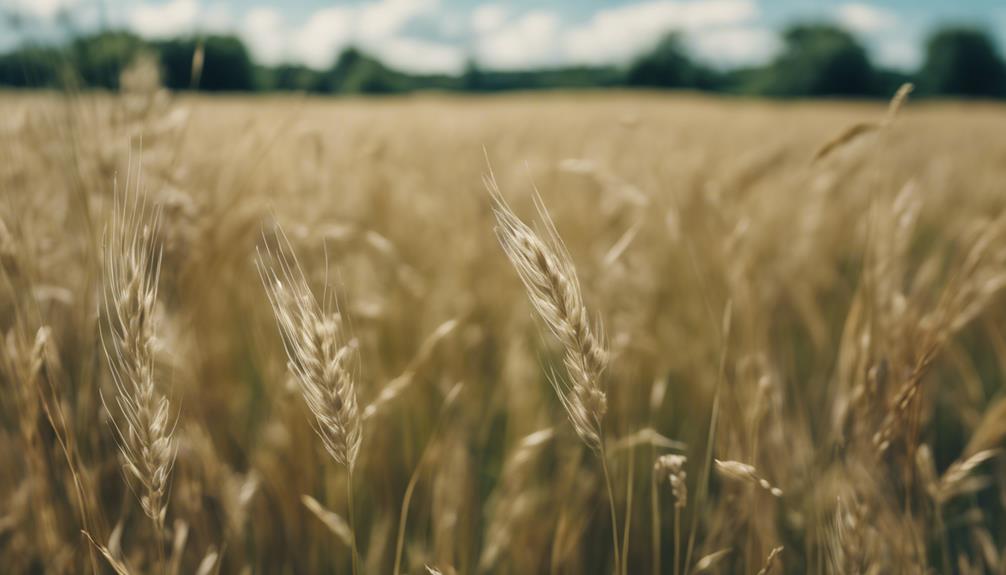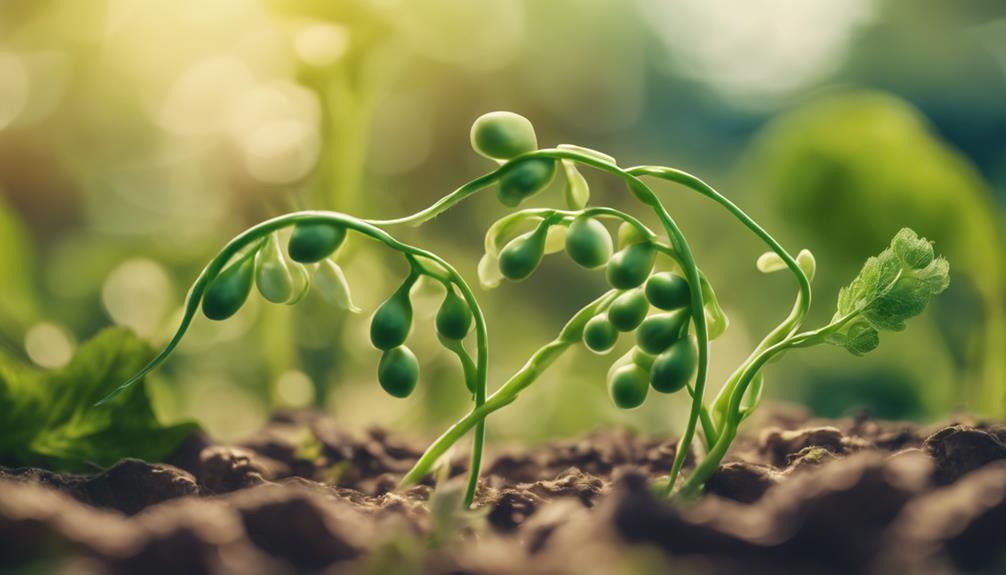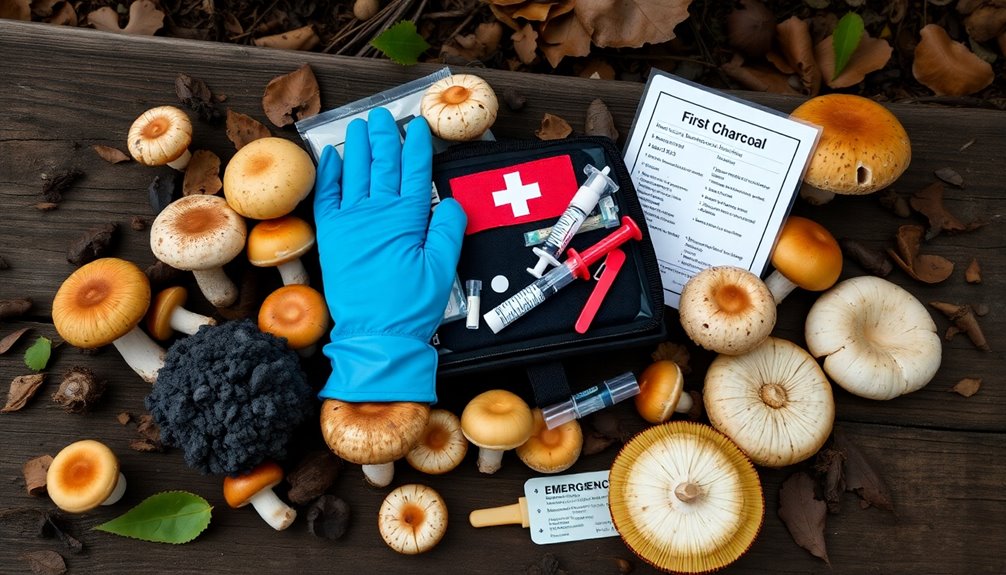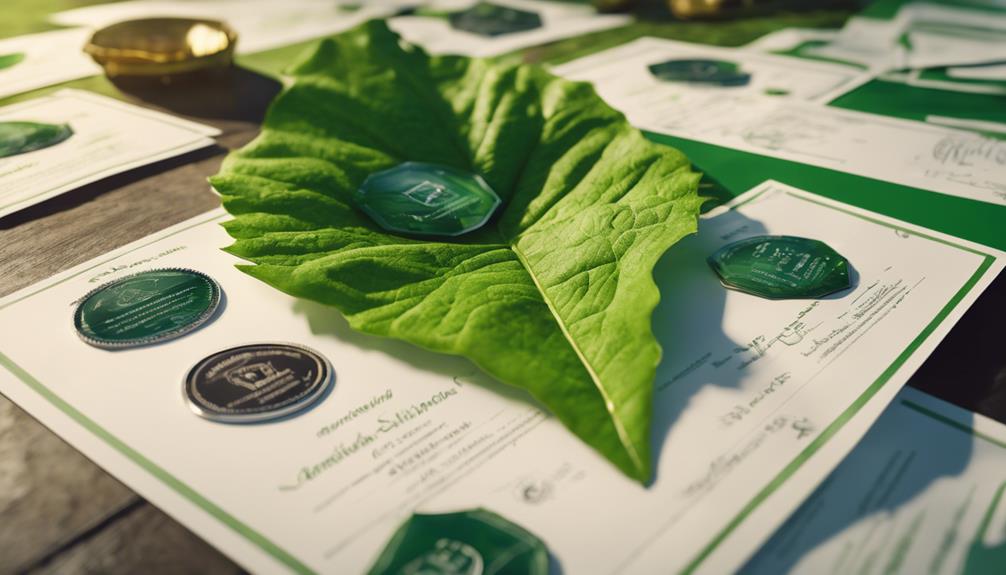You're wondering if you can eat forage oats, but the truth is, they're not suitable for human consumption. Specifically grown for livestock feed, forage oats have lower nutritional value, higher fiber content, and potential pesticide exposure, making them unsuitable for you. They're bred for higher fiber content and lower protein levels, perfect for animal grazing, but not for your plate. If you want to learn more about the differences between forage oats and human-friendly oats, or explore alternatives, keep exploring to get the full story.
Key Takeaways
- Forage oats are specifically grown for livestock feed and are not suitable for human consumption due to lower nutritional value and potential pesticide exposure.
- They have lower protein levels, higher fiber content, and limited energy content, making them less nutritious for humans compared to food-grade oats.
- Forage oats are bred for higher fiber content, which is ideal for animal grazing but not suitable for human dietary needs.
- The growing methods and harvesting timing for forage oats are optimized for livestock feed, resulting in a lower quality product compared to human-friendly oats.
- Consuming forage oats can be harmful to humans due to potential pesticide and herbicide residues, making it essential to prioritize food-grade oats for human consumption.
What Are Forage Oats Exactly?
You're likely familiar with traditional oats, but forage oats are a specific type of oats grown specifically for a different purpose. Unlike those you find in your breakfast bowl, forage oats are cultivated to serve as livestock feed.
Imagine walking along a creek, where the seed of these oats is often scattered to grow into a lush, nutrient-rich crop. Farmers harvest them before maturity to maximize their nutritional value for the animals.
You mightn't be able to find forage oats in a bag of feed at your local pet store, but they're a crucial in many agricultural settings. Forage oats are bred to have higher fiber content than their traditional counterparts, making them an ideal choice for animal grazing.
Nutritional Value Comparison

When it comes to nutritional value, forage oats and human consumption oats diverge considerably, with the former falling short in certain key areas. As you consider incorporating forage oats into your diet, let's take a closer look at how they stack up against their human-friendly counterparts.
Here are a few key differences to keep in mind:
- Protein content: Forage oats typically have lower protein levels than oats meant for human consumption.
- Fiber and fat content: Forage oats are higher in fiber and lower in fat compared to oats intended for human consumption.
- Energy content: While forage oats provide a suitable source of carbohydrates for livestock, their energy content may not be ideal for human consumption.
There's no reason to dismiss forage oats as a viable option altogether, but it's essential to understand their limitations. I'm going to let you know that, while they may not be the best choice for human consumption, they do have a valuable place as a feed option for livestock.
Livestock Benefits of Forage Oats

Forage oats offer a nutrient-rich feed option for your livestock, providing a unique combination of protein, energy, and fiber that supports their overall health and well-being.
As a livestock owner, you've likely explored various feed options for your animals. I've never come across a more nutritious and cost-effective choice than forage oats. With their high levels of protein, energy, and fiber, they promote healthy digestion, weight gain, and overall animal health.
Grazing on forage oats may even reduce the need for additional supplements in their diet. What's more, forage oats can be a sustainable and cost-effective option, especially in pasture-based systems.
There's no reason not to contemplate incorporating forage oats into your livestock's diet. By doing so, you'll not only be providing them with essential nutrients but also supporting their overall health and well-being.
Human Consumption Safety Concerns

While you're enjoying the benefits of forage oats in your livestock's diet, it's important to remember that the same oats aren't suitable for human consumption. You might be tempted to think that oats are oats, but the truth is that forage oats are specifically grown for livestock and aren't processed for human consumption.
This means they may contain higher levels of fiber and lower nutritional value compared to oats cultivated for human consumption.
Here are some key differences to keep in mind:
- Lower quality: Forage oats aren't held to the same quality standards as food-grade oats.
- Pesticide and herbicide exposure: Consuming forage oats intended for livestock may expose you to pesticides or herbicides not approved for human consumption.
- Lower nutritional value: Forage oats may have lower nutritional value and higher fiber content compared to oats specifically cultivated for human consumption.
Differences in Growing Methods

By optimizing seeding rates and harvest timing, you can greatly impact the yield and nutritional quality of forage oats, making them a highly effective livestock feed. When growing forage oats, the goal is to maximize yield and nutritional value for animal consumption.
To achieve this, farmers often plant forage oats at higher seeding rates than grain oats to increase biomass production. This results in a higher-quality feed for livestock. Forage oats are typically harvested at an earlier stage when they're more tender and palatable for animals. This is in contrast to grain oats, which are harvested when mature and dry.
The focus on optimizing yield and quality for animal nutrition is what sets forage oats apart from grain oats. By understanding these differences in growing methods, you can appreciate the specific needs of forage oats and how they're tailored to meet the nutritional requirements of livestock.
Impact on Human Health

You might be wondering if forage oats are safe for human consumption, but unfortunately, the answer is no. Consuming forage oats can have negative impacts on your health. The high fiber content in forage oats can lead to digestive issues, making them difficult to digest.
Here are some reasons why forage oats aren't ideal for human consumption:
- Digestive Issues: The high fiber content in forage oats can cause stomach discomfort, bloating, and other digestive problems.
- Nutrient Imbalance: Forage oats are low in essential nutrients and high in fiber, making them an unbalanced food choice.
- Unpleasant Texture: Forage oats have a tough, unpalatable texture that can be unappealing to the palate.
Instead of consuming forage oats, opt for human-grade oats that are grown and processed specifically for human consumption. These oats aren't only tastier but also provide better nutritional benefits.
Can Humans Eat Forage Oats?

Forage oats, a staple in livestock feed, aren't typically recommended for human consumption, and for good reason. You might be wondering why, but it's because they're cultivated specifically for animals, not humans. These oats are bred to maximize yield and nutritional value for livestock, not to meet your dietary needs.
While they might be safe for you to eat, they may not have the flavor and texture you expect from oats meant for human consumption.
You mightn't enjoy the taste or texture of forage oats, and that's okay. It's better to choose oats specifically labeled for human consumption to make sure you get the quality and taste you're looking for. You deserve better than oats meant for animals.
Plus, oats for humans are bred to meet your nutritional needs, so you'll get the benefits you need. So, if you're looking to incorporate oats into your diet, make sure to choose the right kind. Your taste buds and body will thank you.
Oat Varieties for Human Consumption

Your grocery store likely carries a variety of oats specifically bred for human consumption, offering a range of flavors, textures, and nutritional profiles to suit your dietary needs. These food-grade oats are cultivated to provide ideal taste, nutrition, and culinary experience.
When selecting oats, you'll find options like:
- Rolled oats, which are steamed and rolled into flakes, making them easy to cook and versatile in recipes.
- Steel-cut oats, which are cut into smaller pieces, giving them a chewier texture and nuttier flavor.
- Instant oats, which are pre-cooked and then dried, making them quick to prepare.
These varieties cater to different tastes, cooking methods, and nutritional requirements.
Safe Handling and Storage

Properly storing forage oats is crucial to maintaining their nutritional value and preventing spoilage, as even slight moisture can lead to mold growth and reduced feeding efficiency. When storing forage oats, you should keep them in a cool, dry place to preserve their quality. Avoid areas prone to moisture, as it can lead to spoilage and reduce feeding efficiency.
Here are some storage tips to keep in mind:
| Storage Tip | Why It's Important | Benefits |
|---|---|---|
| Store in a cool, dry place | Prevents mold growth and spoilage | Maintains nutritional value |
| Regularly inspect stored oats | Detects pests and deterioration | Ensures safe consumption |
| Use properly sealed containers | Protects from contaminants | Maintains freshness |
| Avoid moisture-prone areas | Prevents spoilage and reduced efficiency | Maintains feeding efficiency |
Alternatives to Forage Oats

When it comes to forage options, you might want to explore alternatives to oats, especially if you're seeking longer greenery or a more diverse forage. One option could be annual ryegrass, which offers extended growth periods and excellent grazing potential. Additionally, legumes like clover can provide abundant nutrition while enhancing soil health through nitrogen fixation. For those still considering oat variants, mowing buck forage oats regularly can promote regrowth and maintain plant vitality over a longer season. Moreover, incorporating crops like winter wheat or triticale can extend the grazing season further while offering hardy options that resist varying weather conditions. For optimal results, it’s important to manage growth cycles carefully, and practices like **mowing buck forage oats** regularly will ensure vibrant, sustainable forage outputs. Whether rotating or mixing diverse crops, these strategies can greatly enhance the quality and longevity of your forage system.
If you're looking for a change, consider these alternatives:
- Winter Rye Grain: For longer greenery, plant winter rye grain as an alternative to forage oats.
- Clover Mix: Mix clovers like medium red and alsike with oats for a diverse forage option.
- Triticale: This is a preferred alternative to oats for extended growth periods, although you might need to order it online due to limited local availability.
Feed oats still offer benefits like high germination rates and cost-effectiveness as an alternative forage option. By exploring these alternatives, you can find the best fit for your needs and maintain a healthy and diverse forage for your animals.
Remember to research and plan carefully before making any changes to your forage strategy.
Frequently Asked Questions
What Is the Difference Between Oats and Forage Oats?
You're wondering what sets oats apart from forage oats? Well, forage oats are bred for animal feed, with higher fiber and less palatable, whereas regular oats are cultivated for human consumption, prioritizing taste and texture.
What Is the Real Truth About Oatmeal?
As you hold a warm bowl of oatmeal, imagine the golden fields of harvest, symbolizing the wholesome truth: oatmeal, a processed and nutritious food, is a world apart from forage oats, a feed crop for livestock, with distinct nutritional profiles and purposes.
What Are the Benefits of Forage Oats?
You're wondering about the benefits of forage oats, and it's great that you're curious! Forage oats offer numerous benefits, including improved animal health, weight gain, and enhanced milk production, making them a valuable addition to livestock diets.
Are Forage Oats Good for Deer?
You're probably wondering if forage oats are good for deer; the answer is yes, they're an excellent food source, providing essential nutrients and attracting them to specific areas, making them easier to observe and manage.
Conclusion
You've made it to the end of our forage oats exploration!
Did you know that oats are the 6th most widely cultivated crop globally, covering over 22 million hectares of land?
Now that you know the truth about forage oats, you can make informed decisions about their use.
Remember, while forage oats aren't suitable for human consumption, other oat varieties are perfect for your oatmeal or baking needs.
Store them properly, and enjoy your oats safely!










